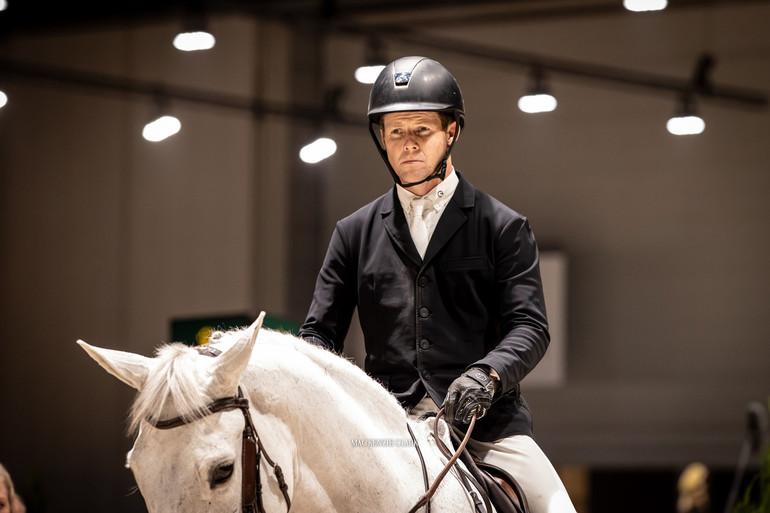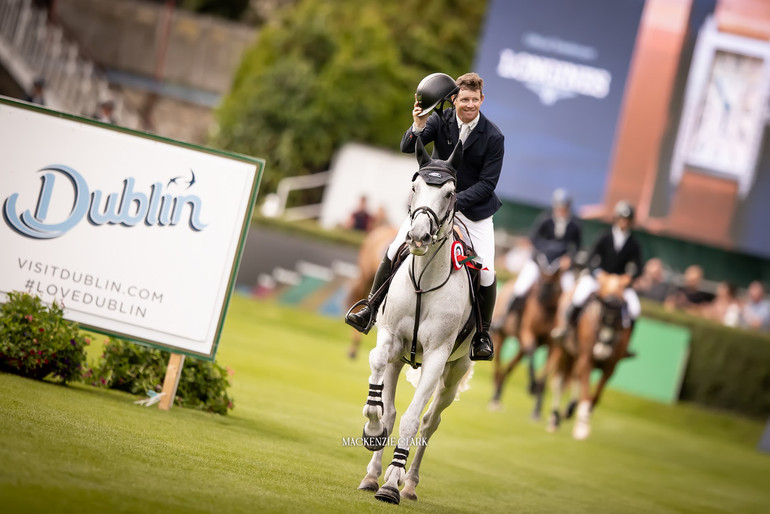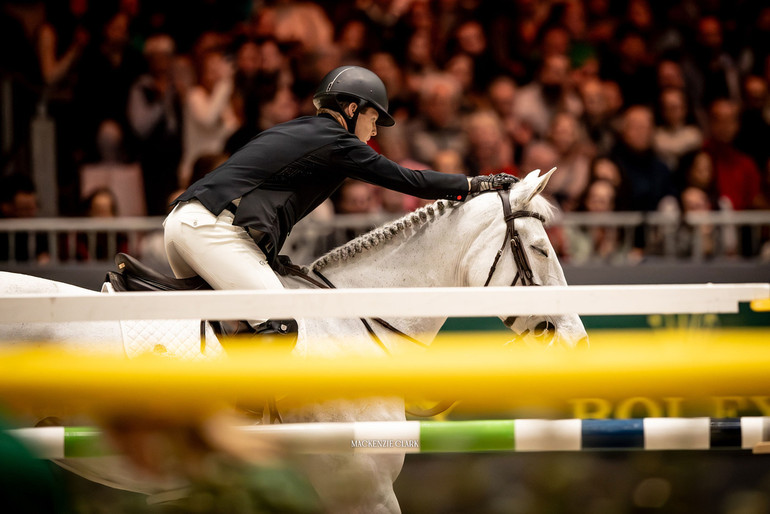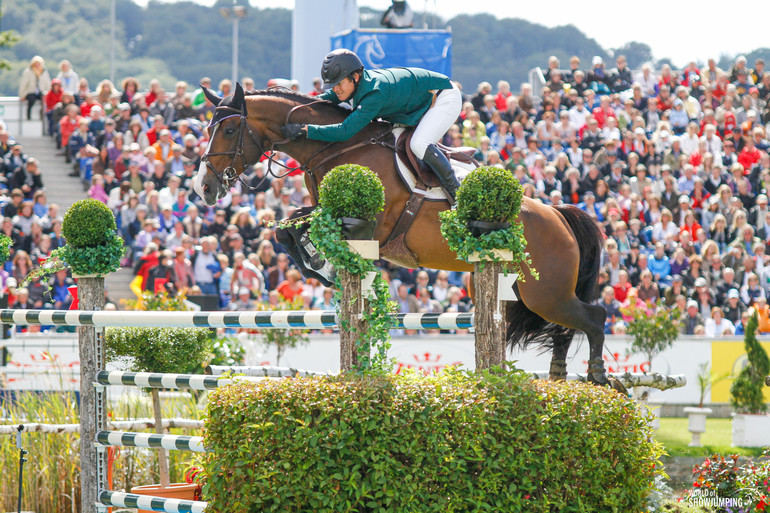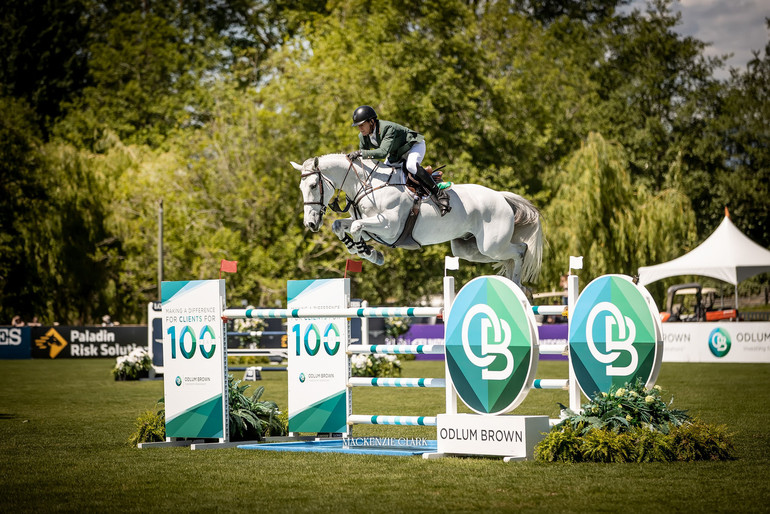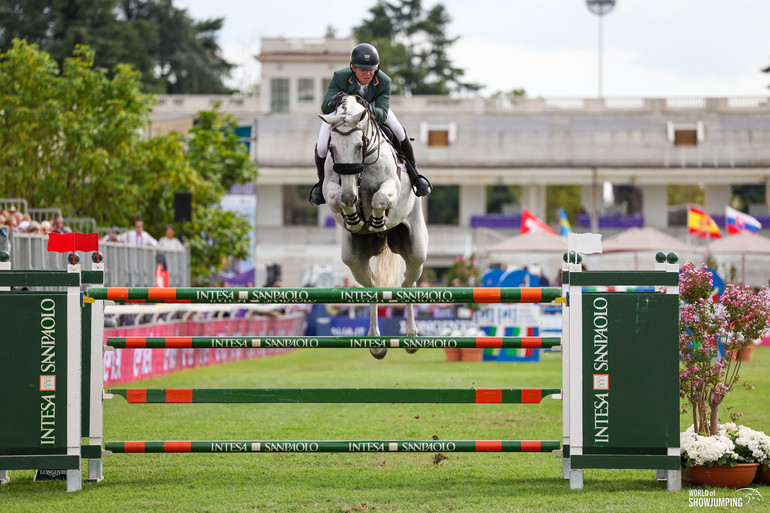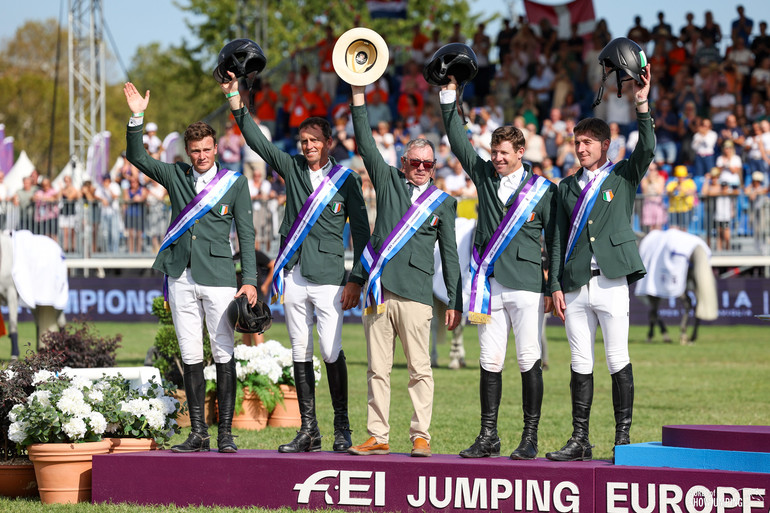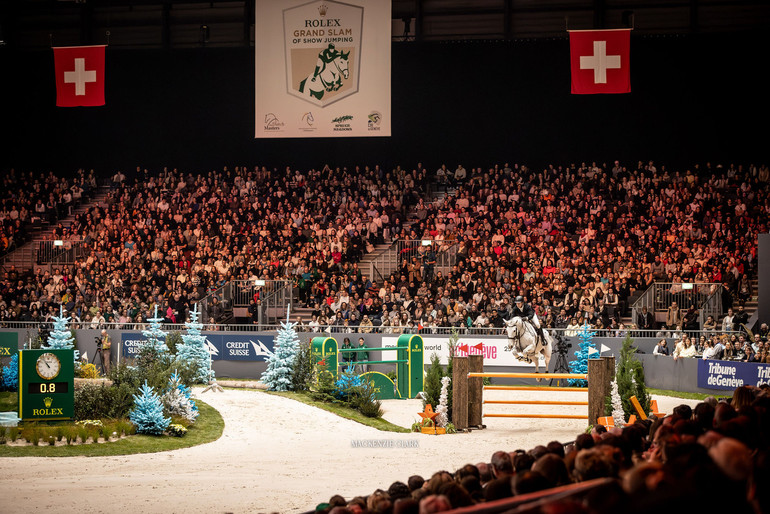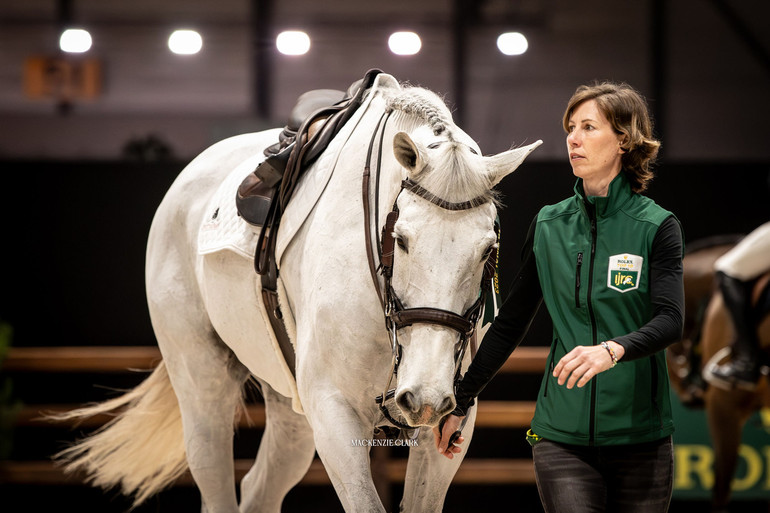Text © World of Showjumping
After a successful 2023, which included team silver at the FEI Jumping European Championship in Milan, his first ever World Cup victory, as well as wins in the five-star 1.60m Grand Prix in San Miguel de Allende and in the 1.60m Sport Ireland Classic on home soil at Dublin Horse Show, Ireland’s Shane Sweetnam closed off the season at CHI Geneva where he made his debut in the prestigious Rolex IJRC Top 10 Final. “I’d love to be back in Geneva again for this final, but the ranking is not something I will be chasing,” the 43-year-old tells WoSJ.
“I enjoy competing at these shows, and I am always aiming to improve; in my own opinion, I was not a great rider when I was younger and I keep trying to get better all the time. I keep putting in the work, and a reward for that is getting into these shows and competing with great riders. While it is a process of work, it is at the same time a reward; for me, it is not about only winning, I simply enjoy being at this level and learning from those around me.”
Sweetnam, currently the highest ranked Irish rider on the Longines Ranking, has built his own career nearly as a by-product of simply trying to make a living and running his family business. Based in Wellington, Florida, in the winter and Lexington, Kentucky, during the summer months, Shane and his wife Ali Sweetnam run Sweet Oak Farm – an operation with around 50 horses, including Shane’s competition string, their kids’ ponies and horses, as well as sales horses and horses from clients.
“For me – the way our operation is, the life we live – it is a business. I don’t look at the horses I compete with as a business, but I look at our whole operation as one – and I have to make sure it runs,” the Irish rider, who has lived half of his life in America, explains. “That is how I started out, and it is an aspect that will always be there. Perhaps I am higher on the ranking now, but my life is mostly thinking about our family.”
Not one for an office job
Shane grew up as the youngest of five siblings, and started to ride ponies when he was seven. “All my siblings had ridden before me, it was a hobby for us,” Sweetnam explains. “My parents have always been very interested in the sport and they got me going in ponies and then it just took off from there.”
“Growing up, horses were a part of our every-day life: While I was in school, my routine would be to get up, feed the ponies, do the stables, cycle to school, study, then cycle back, do the ponies and then do my homework. I played sports as well on top of that, and that was the norm. I am sure that I complained and whined when I was young, but ultimately it gave me a great structure and understanding of hard work and seeing the results from being disciplined.”
When I was in college, I realized that I did not want to be in an office every day
“My parents are probably the main reason that my riding career got going,” he continues. “They pulled me along, drove me around and educated me – it was a good structure to grow up in. I was lucky to have a good pony that I did the Europeans with, and I also jumped internationally as a junior and young rider, but at that stage, it was just a hobby. When I was in college, I realized that I did not want to be in an office every day, and that is when I started to think about horses as a way of making a living.”
The American dream
And to do that, Sweetnam left Ireland as an 22-year-old to see what life had to offer on the other side of the pond. “I was not that concerned about riding or competing, it was more about seeing if making a living with horses was possible,” he recalls. “It is all very much client based in the U.S., that was the first thing I noticed. Then I met Ali, who had already been training ponies and when we had been together for some time, it made sense for us to start our own business. That is how it all began; at first it was more about the training and selling and not really competing on the highest level. Training was our foundation and it is still a big part of our operation at Sweet Oak Farm.”
If you have a good attitude, work hard and keep learning, you can reach a certain standard
“When I came to America, I did not have any horses,” Sweetnam continues. “When we started our own business, I was lucky enough to get one Grand Prix horse that took me to bigger rings, but not to the top level. Then we met with Spy Coast Farm and got one horse from them in our first year, and each year the string got bigger and more diversified. I had some Grand Prix horses and some speed horses from them, and then I was lucky to get the ride on Amaretto d’Arco (Darco x Tenor Manciais, bred by Luc de Snerck) in December 2008 – and the following year, it all kind of exploded to the highest level,” Sweetnam tells about the partnership that has been a corner stone in his sport career. “I am lucky to have owners like Lisa Lourie, the Preston-family, the Gilbertson-family and the Vogel-family who have supported me for a long time and enabled me to stay at this level, while Ronan Clarke and Pia Levin have helped us find horses like Main Road, Amaretto d'Arco, Chaqui and James Kann Cruz – and many others."
“If you have a good attitude, work hard and keep learning, you can reach a certain standard,” Sweetnam reflects on the opportunities the younger generation has in breaking through to the very top in a sport that still is known for its elitist image. “Obviously, to get to the very top takes a lot of hardship, work, drive, and hours. Compared to myself, I think my children will have it a bit easier because there is a certain foundation there. However, someone like Martin Fuchs also had a solid foundation with his family, but that did not make Martin great; he has had to push himself to get to where he is today, that is all down to him. And the same goes for Steve Guerdat; success is always down to each individual, no matter what kind of background one might have. I think if you go through the top 10, 20 or 50, you will see how hardworking and driven these riders are, wanting to always learn. And then you can ask yourself how many of them are wealthy; not so many I believe."
To get to the very top takes a lot of hardship, work, drive, and hours
"Like here in Geneva, if you come into the FEI stable at seven in the morning, you will see many of the top riders there to get their horses out while it is quiet – it shows the drive and consideration they have for their horses. The hours everyone is putting in is incredible," Sweetnam says. "It is the norm in this business everywhere; you can make a living by putting in that work, adapting and wanting to learn. With that, you can get somewhere – whatever level it is you want to get to.”
Quality over quantity
“Out of experience, it’s more about having the right horses rather than a big group,” Sweetnam tells when asked about the factors that have contributed to his current top ranking. “When you have a horse like James Kann Cruz (Kannan x Cruising, bred by Patrick Connolly), you can go to most big shows and try to win a Grand Prix – and the Grand Prix classes nowadays play a massive part when it comes to ranking points. I remember when the 1.45m classes counting for ranking group D used to matter, but I don’t believe they do anymore; I think you have to be at the biggest shows, competing in the biggest classes. And there are not so many top horses that can go and take these classes on, which is why riders like Henrik (von Eckermann) and Ben (Maher) are on the top; they have a group of top Grand Prix horses. However, even with them, it is their top three horses that most of the time are making it count. So, in order to stay on the top, it is better to have four right horses than seven ok horses – in my opinion.”
Out of experience, it’s more about having the right horses rather than a big group
“2023 was a bit of a rebuilding year,” Sweetnam tells about his current horse power. “Alejandro (Acorado’s Ass x Continue, bred by Friedhelm Tillmann) sustained an injury at the beginning of the year, which left a big hole in my string of horses and the sale of Out of the Blue SCF (Verdi TN x Cassini I, bred by Spy Coast Farm) left another gap. However, I have two 9-year-olds, Cjoxx Z (Comme Il Faut x Tlaloc la Silla, bred by Joop Timmer) and RR Combella (Cornet du Lys x VDL Indoctro, bred by Solmat Agropecuaria S.A.) who are both very talented and were very good at the end of 2023. I believe the two of them were a big reason I made it to the Top 10. However, with a small group of horses, it is all about trying to manage and protect them as much as I can.”
The luck of the Irish
Last summer, Sweetnam was part of the Irish squad that won team silver at the FEI Jumping European Championship in Milan, Italy. “Michael (Blake) has done a great job, we have had a good run in the last few years,” Sweetnam says. “In 2023, we had a great squad of horses and riders, and we won the Nations Cups in Vancouver, Rome and at Spruce Meadows. The silver medal at the Europeans was another major result for us. Going into 2024 it bodes well that we have been so consistent – knocking at the door all the time. For 2024, it will obviously be different, as there are only three team members at the Olympics and no drop-score. I think we have some strong pairs though and hopefully we will have a good chance in Paris. However, you need a bit of luck too; the horses have to stay healthy, and come around Paris, then we see what form we are in.”
Going into 2024 it bodes well that we have been so consistent – knocking at the door all the time
“Obviously, the big goal for 2024 is to be in the best possible place for Paris,” Sweetnam continues. “I will do my best for both me and James Kann Cruz to be healthy, to be able to give a 100%. That is the goal for the summer. There are of course the Rolex Majors in Aachen, Spruce Meadows and Geneva, and with a horse like James Kann Cruz, I am always going to be aiming at those. However, as I have gotten older, I have learned not to plan too far ahead, especially not with horses; so much can change. Right now, my mind is on next summer and Paris. Hopefully I can give a good account of myself and give my horse the best chance possible.”
Top shows set a high standard
Having spent half of his life in America, Sweetnam has seen the standard of shows getting better. “In the last couple of years, there has been a lot of improvement and there are a lot of options now – which is great. However, it is very expensive, across all levels. If you are winning prize money, it is good, but if you are not winning, it is not easy. In Europe, the entry fees are not too expensive at the shows I go to and the standard is very high. In America, especially for a developing rider with a good young horse, it would be nice if it wasn’t that expensive. Finding a solution somewhere in the middle of the American and European fees would be great.”
If you are winning prize money, it is good, but if you are not winning, it is not easy
Mostly competing at the biggest shows worldwide, Sweetnam believes that the general standard in the sport and what is expected from the organizers is at a high level. “The best shows set a certain standard, like in Geneva the footing is perfect, the security is good, the stables are great – and the same in America, there are so many options now and the organizers are always trying to raise the bar. I am lucky to go to shows with high standards; 99% of the shows I go to, the management staff are putting in long hours to get everything right. I try not to be critical if people are trying to be better, no one can be perfect.”
“The sport has changed so much in the last ten years, that I don’t know what the future holds,” Sweetnam continues. “Hopefully we can keep evolving in the right direction, with people doing the right thing for the sport and for the horses, without getting distracted and having self-interest come into play. I think riders are involved and pro-active; many of us are discussing different issues, whereas before, we might have accepted a lot, like bad footing – now that is not the case anymore. If something is not right, there are people who now will react immediately.”
All about the team
At Sweet Oak Farm, Sweetnam is supported by a team that has been with him for a long time and enables him to juggle so much. Sweetnam’s show groom Maria Israelsson has worked alongside him for nine years, while both Paddy McNamara and Seamus McKeever joined the team seven years ago. When Maria and Seamus are in Europe, Paddy manages the horses that stay at home in the US. “They are fantastic,” Sweetnam says about another key factor in his success. “I can trust them completely with the horses. Number one, they love our horses, and number two, they are always doing right by them. I am lucky to have people like Maria, Paddy and Seamus, they are very good horse people who had a great education before coming to me. I have learned from them and I keep learning from them all the time.”
Number one, they love our horses, and number two, they are always doing right by them
“It is great to have a team like this; I have a lot going on and they give me comfort in knowing that I don’t have to worry,” Sweetnam continues. “For grooms, with the hours they have to do and the effort and care they have to put in, is not a typical 9-5 job. It is their life and it is incredibly hard to find good people. I am very lucky and spoiled with Maria, Paddy and Seamus. If they decide that they have had enough of me, to go and find someone like them would be very hard.”
“I totally respect the work grooms do,” Sweetnam concludes. “I think we as riders all know that the good teams, they are truly good teams. James Kann Cruz cannot go well without everyone in the team doing their job well, and the same goes for King Edward, or any other horse. I think at the higher level, we are all very well aware of the parts everyone in the team plays – the groom, farrier, owner, vet, physio, the transport… Everyone plays their part and the grooms are probably the most important, because they are with the horses 24/7. I think we all try to appreciate them as much as we can. Some people will want to be in the background, some want to be in the front, it depends on your character, but there is no harm in grooms being recognized with awards and bonuses. I believe that it might lead to riders on lower levels and younger people to understand that they have to appreciate the staff they have, that there is a high standard of appreciation.”
9.1.2024 No reproduction of any of the content in this article will be accepted without a written permission, all rights reserved © World of Showjumping.com. If copyright violations occur, a penalty fee will apply.



